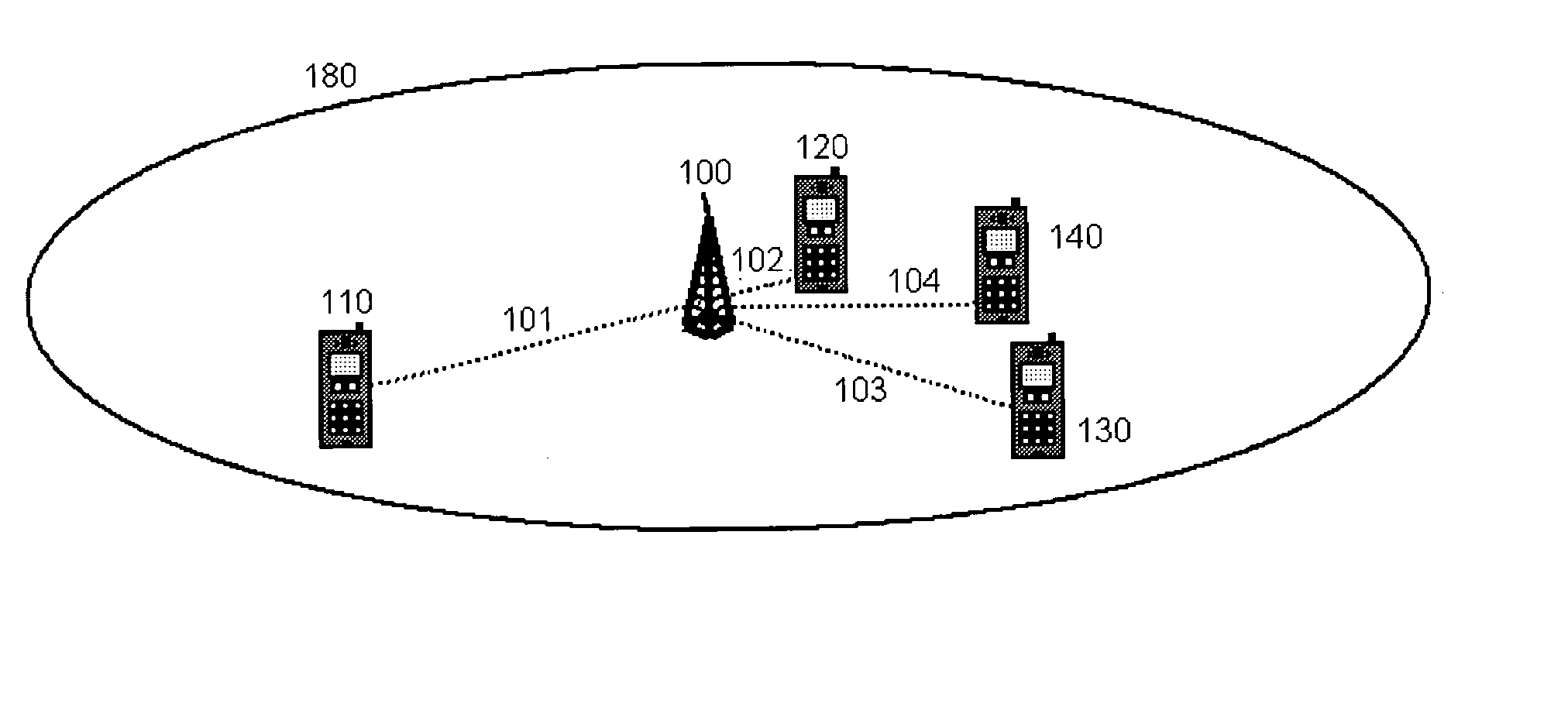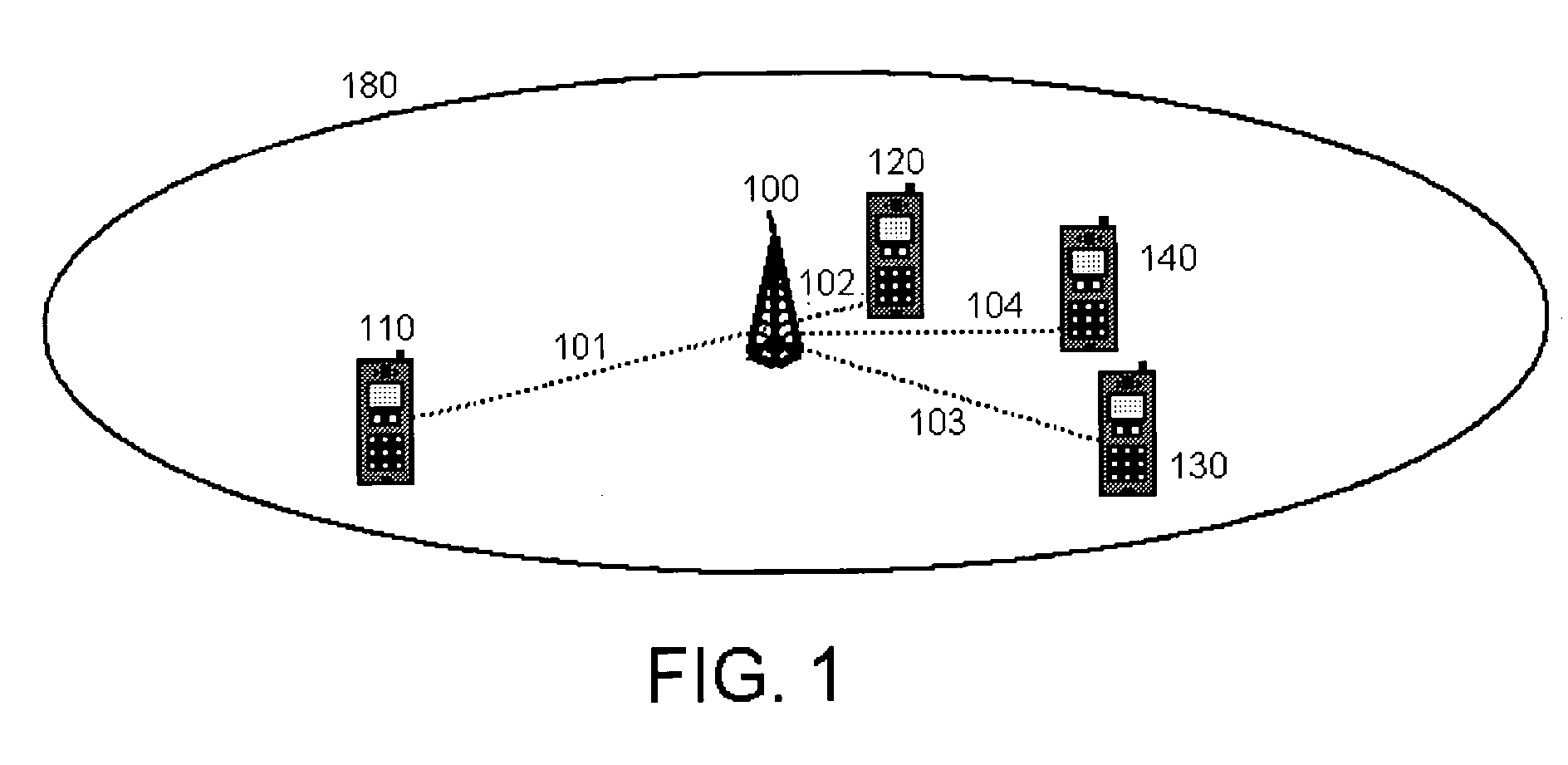Time division duplex system and method with improved guard time
guard time technology, applied in the field of communication networks, can solve the problems of increasing disadvantage, requiring a guard time interval to separate downlink and uplink time, and division duplex, and achieve the effect of improving the efficiency of a time division duplex communication system and improving efficiency
- Summary
- Abstract
- Description
- Claims
- Application Information
AI Technical Summary
Benefits of technology
Problems solved by technology
Method used
Image
Examples
Embodiment Construction
[0014]FIG. 1 is a diagram of a mobile communication network, illustrating aspects of an embodiment of the present invention. FIG. 1 depicts a single cell with one base station 100 and a plurality of mobile stations, 110, 120, 130, and 140. The mobile stations, for illustration purposes, are assumed to be at different distances from the base station 100. Mobile station 120 is depicted as closest to the base station 100, at a distance shown as 102. Mobile station 140 is the second closest, at a distance depicted as 104. Mobile stations 110 and 130 are the furthest from the base station 100, at approximately the same distance shown as 101 and 103 respectively. The cell radius of the base station 100 is depicted in FIG. 1 as 180.
[0015] The mobile stations 110, 120, 130, 140 and the base station 100 are assumed to have appropriate interfaces for establishing a wireless communication link. It should be noted that the present invention is not limited to any particular wireless link techno...
PUM
 Login to View More
Login to View More Abstract
Description
Claims
Application Information
 Login to View More
Login to View More - R&D
- Intellectual Property
- Life Sciences
- Materials
- Tech Scout
- Unparalleled Data Quality
- Higher Quality Content
- 60% Fewer Hallucinations
Browse by: Latest US Patents, China's latest patents, Technical Efficacy Thesaurus, Application Domain, Technology Topic, Popular Technical Reports.
© 2025 PatSnap. All rights reserved.Legal|Privacy policy|Modern Slavery Act Transparency Statement|Sitemap|About US| Contact US: help@patsnap.com



